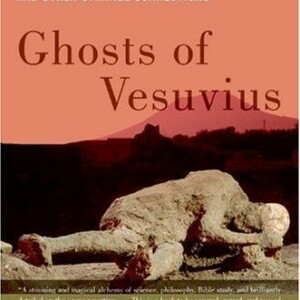Isaac’s Storm
$28.00
| Title | Range | Discount |
|---|---|---|
| Trade Discount | 5 + | 25% |
- Description
- Additional information
Description
At the dawn of the twentieth century, a great confidence suffused America. Isaac Cline was one of the era’s new men, a scientist who believed he knew all there was to know about the motion of clouds and the behavior of storms. The idea that a hurricane could damage the city of Galveston, Texas, where he was based, was to him preposterous, "an absurd delusion." It was 1900, a year when America felt bigger and stronger than ever before. Nothing in nature could hobble the gleaming city of Galveston, then a magical place that seemed destined to become the New York of the Gulf.
That August, a strange, prolonged heat wave gripped the nation and killed scores of people in New York and Chicago. Odd things seemed to happen everywhere: A plague of crickets engulfed Waco. The Bering Glacier began to shrink. Rain fell on Galveston with greater intensity than anyone could remember. Far away, in Africa, immense thunderstorms blossomed over the city of Dakar, and great currents of wind converged. A wave of atmospheric turbulence slipped from the coast of western Africa. Most such waves faded quickly. This one did not.
In Cuba, America’s overconfidence was made all too obvious by the Weather Bureau’s obsession with controlling hurricane forecasts, even though Cuba’s indigenous weathermen had pioneered hurricane science. As the bureau’s forecasters assured the nation that all was calm in the Caribbean, Cuba’s own weathermen fretted about ominous signs in the sky. A curious stillness gripped Antigua. Only a few unlucky sea captains discovered that the storm had achieved an intensity no man alive had ever experienced.
In Galveston, reassured by Cline’s belief that no hurricane could seriously damage the city, there was celebration. Children played in the rising water. Hundreds of people gathered at the beach to marvel at the fantastically tall waves and gorgeous pink sky, until the surf began ripping the city’s beloved beachfront apart. Within the next few hours Galveston would endure a hurricane that to this day remains the nation’s deadliest natural disaster. In Galveston alone at least 6,000 people, possibly as many as 10,000, would lose their lives, a number far greater than the combined death toll of the Johnstown Flood and 1906 San Francisco Earthquake.
And Isaac Cline would experience his own unbearable loss.
Meticulously researched and vividly written, Isaac’s Storm is based on Cline’s own letters, telegrams, and reports, the testimony of scores of survivors, and our latest understanding of the hows and whys of great storms. Ultimately, however, it is the story of what can happen when human arrogance meets nature’s last great uncontrollable force. As such, Isaac’s Storm carries a warning for our time."The best storm book I’ve read, consumed mostly in twenty-four hours; these pages filled me with dread. Days later, I am still glancing out the window nervously. A well-told story."
— Daniel Hays, author of My Old Man and the Sea
"Isaac’s Storm so fully swept me away into another place, another time that I didn’t want it to end. I braced myself from the monstrous winds, recoiled in shock at the sight of flailing children floating by, and shook my head at the hubris of our scientists who were so convinced that they had the weather all figured out. Erik Larson’s writing is luminous, the story absolutely gripping. If there is one book to read as we enter a new millennium, it’s Isaac’s Storm, a tale that reminds us that there are forces at work out there well beyond our control, and maybe even well beyond our understanding."
— Alex Kotlowitz, author of The Other Side of the River and There Are No Children Here
"There is electricity in these pages, from the crackling wit and intelligence of the prose to the thrillingly described terrors of natural mayhem and unprecedented destruction. Though brimming with the subtleties of human nature, the nuances of history, and the poetry of landscapes, Isaac’s Storm still might best be described as a sheer page turner."
— Melissa Faye Greene, author of Praying for Sheetrock and The Temple BombingErik Larson is the author of six New York Times bestsellers, most recently The Splendid and the Vile: A Saga of Churchill, Family, and Defiance During the Blitz, which examines how Winston Churchill and his “Secret Circle” went about surviving the German air campaign of 1940-41. Larson’s The Devil in the White City is set to be a Hulu limited series; his In the Garden of Beasts is under option by Tom Hanks for a feature film. He recently published an audio-original ghost story, No One Goes Alone, which has been optioned by Chernin Entertainment, in association with Netflix. His Thunderstruck has been optioned by Sony Pictures Television for a limited TV series. Larson lives in Manhattan with his wife, who is a writer and retired neonatologist; they have three grown daughters.TELEGRAM
Washington, D.C.
Sept. 9, 1900
To: Manager, Western Union
Houston, Texas
Do you hear anything about Galveston?
Willis L. Moore,
Chief, U.S. Weather Bureau
The Beach
September 8, 1900
Throughout the night of Friday, September 7, 1900, Isaac Monroe Cline found himself waking to a persistent sense of something gone wrong. It was the kind of feeling parents often experienced and one that no doubt had come to him when each of his three daughters was a baby. Each would cry, of course, and often for astounding lengths of time, tearing a seam not just through the Cline house but also, in that day of open windows and unlocked doors, through the dew-sequined peace of his entire neighborhood. On some nights, however, the children cried only long enough to wake him, and he would lie there heart-struck, wondering what had brought him back to the world at such an unaccustomed hour. Tonight that feeling returned.
Most other nights, Isaac slept soundly. He was a creature of the last turning of the centuries when sleep seemed to come more easily. Things were clear to him. He was loyal, a believer in dignity, honor, and effort. He taught Sunday school. He paid cash, a fact noted in a directory published by the Giles Mercantile Agency and meant to be held in strictest confidence. The small red book fit into a vest pocket and listed nearly all Galveston’s established citizens–its police officers, bankers, waiters, clerics, tobacconists, undertakers, tycoons, and shipping agents–and rated them for credit-worthiness, basing this appraisal on secret reports filed anonymously by friends and enemies. An asterisk beside a name meant trouble, "Inquire at Office," and marred the fiscal reputations of such people as Joe Amando, tamale vendor; Noah Allen, attorney; Ida Cherry, widow; and August Rollfing, housepainter. Isaac Cline got the highest rating, a "B," for "Pays Well, Worthy of Credit." In November of 1893, two years after Isaac arrived in Galveston to open the Texas Section of the new U.S. Weather Bureau, a government inspector wrote: "I suppose there is not a man in the Service on Station Duty who does more real work than he. . . . He takes a remarkable degree of interest in his work, and has a great pride in making his station one of the best and most important in the country, as it is now."
Upon first meeting Isaac, men found him to be modest and self-effacing, but those who came to know him well saw a hardness and confidence that verged on conceit. A New Orleans photographer captured this aspect in a photograph that is so good, with so much attention to the geometries of composition and light, it could be a portrait in oil. The background is black; Isaac’s suit is black. His shirt is the color of bleached bone. He has a mustache and goatee and wears a straw hat, not the rigid cake-plate variety, but one with a sweeping scimitar brim that imparts to him the look of a French painter or riverboat gambler. A darkness suffuses the photograph. The brim shadows the top of his face. His eyes gleam from the darkness. Most striking is the careful positioning of his hands. His right rests in his lap, gripping what could be a pair of gloves. His left is positioned in midair so that the diamond on his pinkie sparks with the intensity of a star.
There is a secret embedded in this photograph. For now, however, suffice it to say the portrait suggests vanity, that Isaac was aware of himself and how he moved through the day, and saw himself as something bigger than a mere recorder of rainfall and temperature. He was a scientist, not some farmer who gauged the weather by aches in a rheumatoid knee. Isaac personally had encountered and explained some of the strangest atmospheric phenomena a weatherman could ever hope to experience, but also had read the works of the most celebrated meteorologists and physical geographers of the nineteenth century, men like Henry Piddington, Matthew Fontaine Maury, William Redfield, and James Espy, and he had followed their celebrated hunt for the Law of Storms. He believed deeply that he understood it all.
He lived in a big time, astride the changing centuries. The frontier was still a living, vivid thing, with Buffalo Bill Cody touring his Wild West Show to sellout crowds around the globe, Bat Masterson a sportswriter in New Jersey, and Frank James opening the family ranch for tours at fifty cents a head. But a new America was emerging, one with big and global aspirations. Teddy Roosevelt, flanked by his Rough Riders, campaigned for the vice presidency. U.S. warships steamed to quell the Boxers. There was fabulous talk of a great American-built canal that would link the Atlantic to the Pacific, a task at which Vicomte de Lesseps and the French had so catastrophically failed. The nation in 1900 was swollen with pride and technological confidence. It was a time, wrote Sen. Chauncey Depew, one of the most prominent politicians of the age, when the average American felt "four-hundred-percent bigger" than the year before.
There was talk even of controlling the weather–of subduing hail with cannon blasts and igniting forest fires to bring rain.
In this new age, nature itself seemed no great obstacle.US
Additional information
| Weight | 19.4 oz |
|---|---|
| Dimensions | 1.1500 × 6.2000 × 9.3000 in |
| Imprint | |
| Format | |
| ISBN-13 | |
| ISBN-10 | |
| Author | |
| Audience | |
| BISAC | |
| Subjects | science gifts for adults, books by eric larson, isaac's storm erik larson, isaacs storm by erik larson, larson, no one goes alone, storm chasers, isaac's storm, eric larson, Erik Larson, erik larson books, SCI042000, isaac, meteorology gifts, earth history, science books for adults, science, history teacher gifts, historical books, gifts for history buffs, emergency preparedness, history books for adults, science book, American history books, clouds, science gifts, earth science, SCI026000, hurricanes, natural disasters, death, biography |










